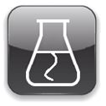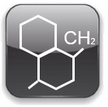Polyvinyl chloride
Rubbers > Group R

| PVC polyvinyl chloride | ||||||||
PVC is the product of the polymerization of vinyl chloride monomer to polyvinyl chloride. It is a polymer obtained from two natural raw materials sodium chloride or common salt (NaCl) (57%) and oil or natural (43%) gas, being thus less dependent than other plastics nonrenewable resources. The PVC is presented in its original form as a white powder, amorphous and opaco. The resin resulting from this polymerization is the most versatile of the family of plastics; as well as being thermoplastic, from it you can get rigid and flexible products. From polymerization processes, compounds in powder or pellet, plastisols, solutions and emulsions are obtained. It is one of the most studied polymers and man comfort for its development and use, as for its wide versatility is used in areas as diverse as construction, energy, health, food preservation and articles of daily use areas, among others. PVC has polar groups (chlorine) and is amorphous, so it mixes well with other substances. The physical properties required of the final products (for example, flexibility, elasticity, impact resistance, antifouling, preventing microbial growth, anti-fog fire retardant) may be designed through formulation with plasticizers and various additives, modifiers and agents dyes. PVC is The physical properties required of the final products (for example, flexibility, elasticity, impact resistance, antifouling, preventing microbial growth, anti-fog fire retardant) may be designed through formulation with plasticizers and various additives, modifiers and agents dyes. PVC is The physical properties required of the final products (for example, flexibility, elasticity, impact resistance, antifouling, preventing microbial growth, anti-fog fire retardant) may be designed through formulation with plasticizers and various additives, modifiers and agents dyes. PVC is(Thermoplastic Elastomers), the only general - purpose plastics which allows the use of flexibility, elasticity and impact strength, by adding plasticizers, additives and modifiers. Since the physical properties of the products are adjustable by combination with additives, only some types of resin are required to cover all applications (fibers, rigid and flexible plastics, rubber, paint and adhesive). | ||||||||
| Symbols | Formula | |||||||
| | |||||||
| PVC Different types of polyvinylchloride | ||||||||
PVC compounds with the greatest resistance to short and long term are those that contain plasticizers and no minimum composite ingredients. This type of PVC is known as UPVC or PVC-U. You can be added other resins or modifiers (such as ABS, acrylic or CPE) to UPVC to produce compounds with improved impact resistance. These compounds are known as modified PVC (PVC-M). Compounds of flexible or plasticized PVC, with a wide range of properties, can also be produced by adding plasticizers. CPVC (PVC-C) (chlorinated PVC), which has a higher chlorine content and oriented PVC (PVC-O) is PVC-U where the molecules are preferably aligned in a particular direction. | ||||||||
Rigid PVC-U | ||||||||
PVC unplasticized PVC-U (unplasticized) is hard and rigid with a maximum tensile stress of about 52 MPa at 20 ° C and is resistant to most chemicals. Generally, PVC-U can be used at temperatures up to 60 ° C, although the actual temperature limit depends on the stress and environmental conditions. It is obtained by melting and molding a suitable temperature of polyvinylchloride with plasticizers except additives. A material that is impact resistant and stabilized against the action of sunlight and weathering is obtained.
|  | |||||||
| Flexible PVC-P | ||||||||
PVC (plasticized) is less rigid; It has a high impact resistance; is easier extrude or mold; It has a lower temperature resistance; It is less resistant to chemicals and, usually, has a lower ultimate tensile strength. PVC-U is the variability of compound to compound in plasticized PVC is higher than that. Vinidex does not produce pressure pipes with PVC plastic.Plastics flexible polyvinyl chloride include a variety of molding compounds, with a wide range of properties and applications and preprocessed with almost all processing techniques. PVC has the advantage of being combined with plasticizers, such as any other plastic. To produce this versatile plastic, polymer of vinyl chloride is combined with plasticizer, stabilizer, filler or extender and other additives depending on the desired properties and process properties of flexible vinyl products utilice.Las dependent additives they contain. When these are suitably dispersed in the polymer matrix of PVC, do not alter the molecular structure of the products, but they affect its properties and its performance in the process. Approximately 60% of all plastic additives, used flexible.La PVC main advantage of these plastics is that they are formulated and therefore it is possible to adapt such a wide variety of applications. It is the only plastics that can be processed by any of the known techniques. Also it has the following qualities:
Its disadvantages are:
| ||||||||
| CPVC (chlorinated) | ||||||||
| The CPVC (chlorinated) is similar to PVC-U in most of its properties, but has a higher temperature resistance and can operate up to 95 ° C. has a similar final effort to 20 ° C and a tensile end of about 15 MPa at 80 ° C. | ||||||||
| PVC-O (PVC oriented) | ||||||||
PVC-O (oriented PVC) sometimes called HSPVC (high resistance PVC). The PVC-O represent a breakthrough in the technology industry of PVC. PVC-O is fabricated by a process that results in preferential orientation of PVC molecules long chain in the circumferential or peripheral direction. This provides a significant improvement of the properties in this direction. In addition to other benefits, you can obtain a maximum tensile strength to double PVC-U PVC-O. In applications such as pressure pipes, which defines the directionality of stress it is present, can have very significant gains in strength and / or material savings. | ||||||||
| PVC-M (modified) | ||||||||
| PVC-M (modified) is rigid and has improved toughness, particularly impact. The modulus, yield strength and ultimate tensile strength are generally lower than the PVC-U. These properties depend on the type and amount of modifier used. | ||||||||
| Product range PVC | ||||||||
We have available the widest range of degrees of rigid and flexible PVC, with different hardness and stabilizations |  | |||||||
| PVC Properties | ||||||||
The PVC has an amorphous structure with polar atoms chlorine in the molecular structure. Having chlorine atoms and the amorphous molecular structure inseparably related. Plastics appear to be very similar in terms of performance and functionality compared with olefin plastics have only carbon and hydrogen atoms in their molecular structures.PVC is a chemically stable material which shows little change in its molecular structure. However, long chain polymers are viscoelastic materials , and can be deformed by the continuous application. This is called creep. PVC is a viscoelastic material, the creep is very low compared to other temperatures, in contrast to the PE and PP, having a molecular movement in its amorphous sections. The p orosidad particle and s characteristic of each type of resin. A greater porosity, greater ease for plasticizer absorption, shortening mixing cycles and eliminating the possibility of "fish eyes" (fish eyes) appear in the finished product. |  | |||||||
| PVC Thermal properties | ||||||||
The main problem surrounding PVC is its low thermal stability caused by the presence of defects in the molecular structure. It is believed that multiple sites of defects in the polymer chain are responsible for this instability. Poly (vinyl chloride) decomposes at a temperature below the processing temperature. The commercially available PVC, on the other hand, already degrade around 140 ° C, if not stabilize before processing. A higher molecular weight is more thermally stable. During processing, the resin is degraded by receiving heat and work. Degradation is in the form of yellowing and impoverishment of the mechanical properties of the product, to prevent this stabilizers are added. | ||||||||
| PVC Electrical properties | ||||||||
High dielectric strength with excellent electrical properties. Being a polar material with a high TG and low water absorption, the electrical properties are hardly affected by the temperature variation, frequency (up to 106 Hz) and humidity within normal working ranges. It has great power electrical insulation. To measure the volume resistivity method, which also allows control is used. |  | |||||||
| PVC Chemical properties | ||||||||
Chemical reactions can be very complex. There are many factors that affect the reaction of a piping system to chemicals it is impossible to build graphics to cover all possibilities. Some of the factors affecting the chemical resistance are chemicals used, their c oncentration, temperatures and durata and / or f requency exposure. PVC is resistant to acid, alkali and almost all inorganic chemicals. Although PVC is swollen or dissolved in aromatic hydrocarbons, ketones and cyclic ethers, PVC is difficult to dissolve in other organic solvents.PVC absorb these substances and this will lead to a reduction in strength. For normal water supply, PVC pipes are not affected by chemical soil and water. PVC is resistant to many alcohols, fats, oils and aromatic free gasoline. It is also resistant to common corroding agents, including inorganic acids, alkalis and salts. The PVC is soluble in cyclohexanone and tetrahydrofuran. It can co-polymerize with vinyl acetate and vinylidene chloride, reducing the melting temperature. It can post-chlorinated, raising its distortion temperature. Rigid PVC resists corrosive fumes and liquids; basic and acidic solutions; saline solutions and other solvents and chemicals. It has good dimensional stability. It is thermoplastic and heat sealable. Only burns in fire; otherwise, it has good resistance to environmental effects, primarily ozone . |  | |||||||
| PVC UV Resistance | ||||||||
The low cost and excellent performance of poly (vinyl chloride) make it a very attractive and suitable plastic. However, PVC suffers from poor thermal and light stability. Under UV irradiation in the presence of oxygen and moisture, the PVC is subjected to a very fast process and peroxidation dehydrochlorination with formation of polyenes. It undergoes dehydrochlorination autocatalytic quickly when exposed to heat and light during molding and use, respectively. Increase discoloration of the polymer and change its physical properties.Degradation also cause a drastic change in the mechanical properties of the polymer, which is accompanied by a decrease or increase in molecular weight as a result of chain scission or crosslinking of the polymer molecules, respectively. | ||||||||
| Polimerization | ||||||||
PVC is a material essentially amorphous syndiotactic portions which do not constitute more than 20% of the total, and which generally has lower crystallinity degrees. PVC is a white, odorless and tasteless, physiologically harmless powder. Has a theoretical content of 57% chlorine, flammability, does not burn by itself. The structure of the particle is sometimes similar to a cotton ball. The diameter varies depending on the polymerization process. Both processes emulsion and suspension, gas VCM is polymerized in a aqueous medium. Mass As a result of the formulation of the plastisol resin mass is obtained. Processes in emulsion, with the aqueous latex PVC occurs with a size of medium particles (by weight) of from 0.1 to 3 .mu.m. For polymer applications paste or plastisol, the exact size distribution of the latex particle is reached during the polymerization process will primarily determine the rheology of the plastisol, when the polymer plasticizer redisperse.The main properties of the plastisol are viscosity, dilatancy and minimum strain. Viscosity resins in mass is a key feature since viscosity by appropriate thicknesses and application rates and characteristics of the finished product are controlled. Flow characteristics observed are considered as non-Newtonian; that is, the relationship between shear stress against shear rate is not equal for all speeds. Thus we have the coating speed (cm / s) against the coating thickness (cm) gives the relation cutting. Suspension resin As a result of the formulation of resin in suspension, compounds are obtained in dry powder form, when processed gradually become a viscous liquid non-Newtonian characteristics, here too there is an optimal melting temperature at which the liquid gets its properties more appropriate to perform the processing operation (160 ° C-180 ° C) flow. In the process of suspension PVC (S-PVC), a suspension of PVC particles is produced, with an average size of between 50 and 200 .mu.m. In addition the particle size, the main differences between the different categories of S-PVC depend on the average length of the polymer chains and particle porosity. Suspension PVC always occurs discontinuously in a mixing vessel.After drying, suspension PVC is usually sieved to remove coarse particles, which could cause problems during processing. The polymerization reactions are exothermic reactions and, therefore, the reactor should provide refrigeration. The pressure in the reactor is usually between 0.4 and 1.2 MPa and the reaction temperature is usually 35 to 70 ° C. At the end of the reaction, between 85% and 95% VCM becomes PVC. |  | |||||||
| PVC Processability | ||||||||
The processability of a thermoplastic material depends largely on its melt viscosity. PVC is not suitable for injection molding large products, since its melt viscosity is comparatively high. Moreover, viscoelastic behavior of the molten PVC is less dependent on the temperature and is stable. Therefore, PVC is suitable for the extrusion of complex shapes (for example, housing materials), as well as for calendering films and wide blades (for example, agricultural films and leather PVC). PVC also exhibits excellent processability in manufacturing high bending, welding, bonding , high frequency vacuum forming and workability.The melting temperature (glass transition temperature) of the resin in suspension homopolymer is 140 ° C the copolymer 130 ° C. As formulated, the melting temperatures of the resins increase to 160 ° C and 180 ° C. Fillers and plasticizers also serve to increase said temperature, although some do more effectively than others. |  | |||||||
| Engineering Note | ||||||||
Commercially available PVC is highly branched and has low crystallinity. The high molecular weight PVC (K> 100 value with number average molecular weight up to 150,000) has several advantages, including a more ordered structure, more linearity, higher crystallinity and higher mechanical strength. Plasticized PVC is the "monomeric" and plasticizers "polymeric" called low molecular weight. The "polymeric" plasticizers are low molecular weight oligomeric materials are polyester liquid at room temperature. os additives such as plasticizers and stabilizers, are a necessary component of all PVC formulations. Without these additives, PVC is fragile, is easily degraded and is not versatile. Softeners are not chemically bonded to the PVC polymer, but float around the polymer, like water into a sponge, giving the plastic the required flexibility. The current debate on toys polyvinylchloride (PVC or vinyl) chloride on whether the risk to children of exposure softeners (plasticizers) known as phthalate esters that filter during use is significant enough to justify restrictions or prohibitions of this plastic. Laboratory studies show that phthalates can cause cancer and reproductive harm, and emerging evidence points to some phthalates as potential hormone disruptors. | ||||||||
| PVC Applications | ||||||||
In plastic carpentry, roller shades, plates, panels for decorative coatings, pipes for plumbing, drains. The latter application has the advantages that are light for transportation and handling, cheaper materials, do not corrode, etc. Rigid PVC plastics formulated products have remarkable properties. These versatile materials offering the possibility of preparing an almost unlimited number of compounds, are produced with raw materials of low cost. 56.7% of the PVC molecules consist of chlorine. This means that neither the price nor availability are entirely dependent polymer materials from oil. |  | |||||||
